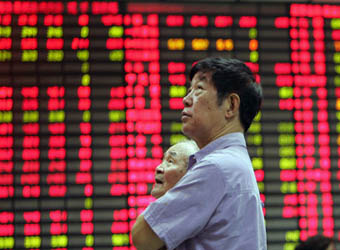Japanese and Hong Kong shares were up more than 1 percent on Thursday, taking their cues from the Dow Jones industrial average shooting past 20,000. It comes after a volley of executive orders by President Donald Trump.
Japan’s Nikkei 225 climbed 1.58 percent, extending Wednesday’s rally of 1.43 percent. Across the Korean strait, the Kospi gained 0.67 percent, while Hong Kong’s Hang Seng was up 1.33 percent.
Mainland Chinese shares were higher. The Shanghai composite inched up 0.13 percent Shenzhen composite added 0.435 percent.
Markets in Australia, India, Taiwan and Vietnam are closed for bank holidays.
The new president cleared the way for two controversial pipelines on Tuesday, making it easier for TransCanada to build the Keystone XL pipeline and for Energy Transfer Partners to build the final portion of the Dakota Access pipeline.
Trump also signed executive orders on immigration on Wednesday, including one of border security and the intent to build a wall along the U.S. southern a border, and another to strengthen the enforcement of immigration laws.
The Dow Jones industrial average jumped 0.78 percent to close at 20,068.51, at an all-time record high.
Optimism spilled over into the other two major indexes, with the S&P 500 advancing 0.8 percent to finish at a new record at 2,298.37 and the Nasdaq composite surging 0.99 percent to close at all-time high of 5,656.34.
Following Trump’s surprise presidential win, U.S. markets and the dollar had rallied on expectations of more fiscal spending, deregulation in various sectors, higher inflation and rising interest rates.
But one surprising reaction to the blue-chips index’s record high was the dollar, which slipped instead of gaining.
“Over the past few months we have seen strong correlations between the U.S. dollar, U.S. yields and U.S. stocks but today, as the Dow Jones Industrial Average climbed above 20,000 for the first time, the greenback barely budged,” said Kathy Lien, managing director of FX strategy for BK Asset Management, in a note on Thursday.
Lien said the dollar is lagging because “Trump has been talking down the currency and his policies make foreign investors nervous” and “until the market comes to terms with the risk of benefits of Trump policy, the dollar may have a tough time mimicking the one way moves in stocks and bonds.”
In other stock news, Japan Display soared 8.22 percent after it said it would start providing flexible liquid crystal display (LCD) panels for smartphones.
In currency markets, the greenback was trading weaker against a currency basket, at 99.84. The yen gained against the dollar at 113.37 while the Australian dollar traded at $0.757.
The sterling rose to a six-week high against the dollar on Wednesday on hopes that British Prime Minister Theresa May’s first meeting with U.S. President Donald Trump might pave the way for a bilateral trade deal, Reuters reported.
The sterling was fetching $1.2641 during Asian hours.
On the commodities front, spot gold was under pressure as rising shares eroded the bullion’s safe haven appeal. Spot gold was trading at $1,199.45 an ounce down from levels above $1,217 seen earlier this week.
Brent futures were trading up 0.53 percent at $55.37 a barrel on Wednesday during Asian time, while U.S. crude futures gained 0.53 percent to trade at $53.03.
Source: CNBC



